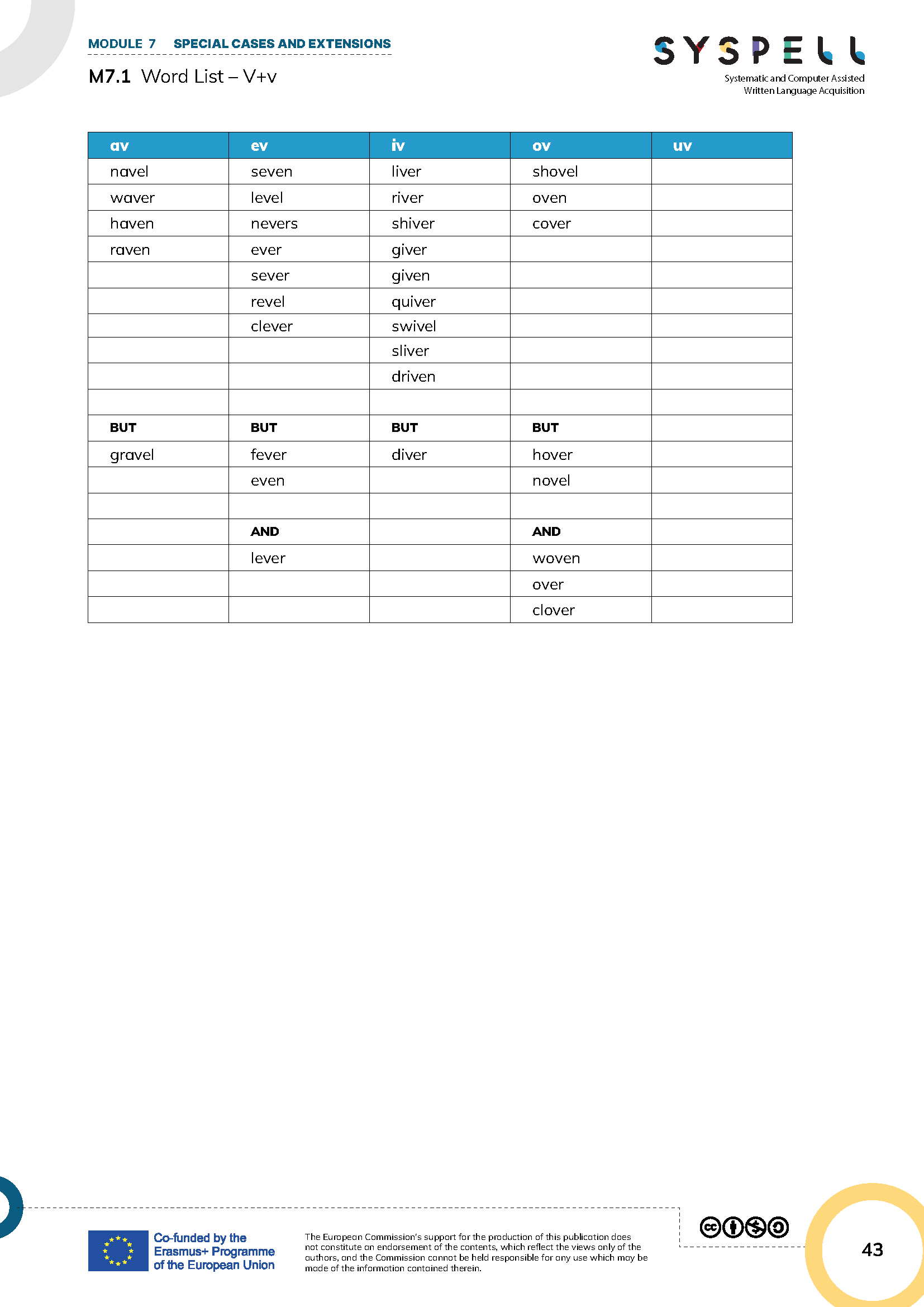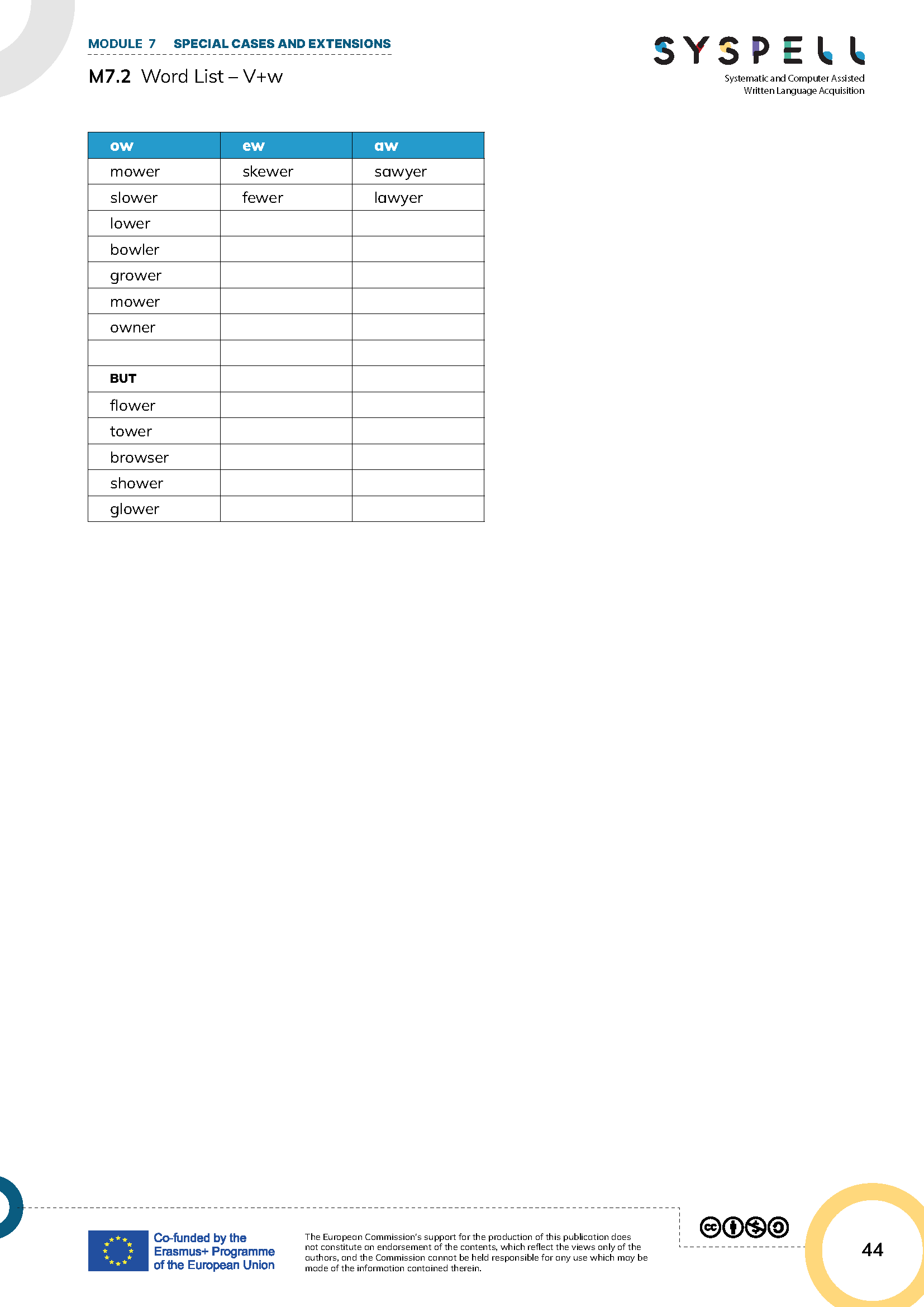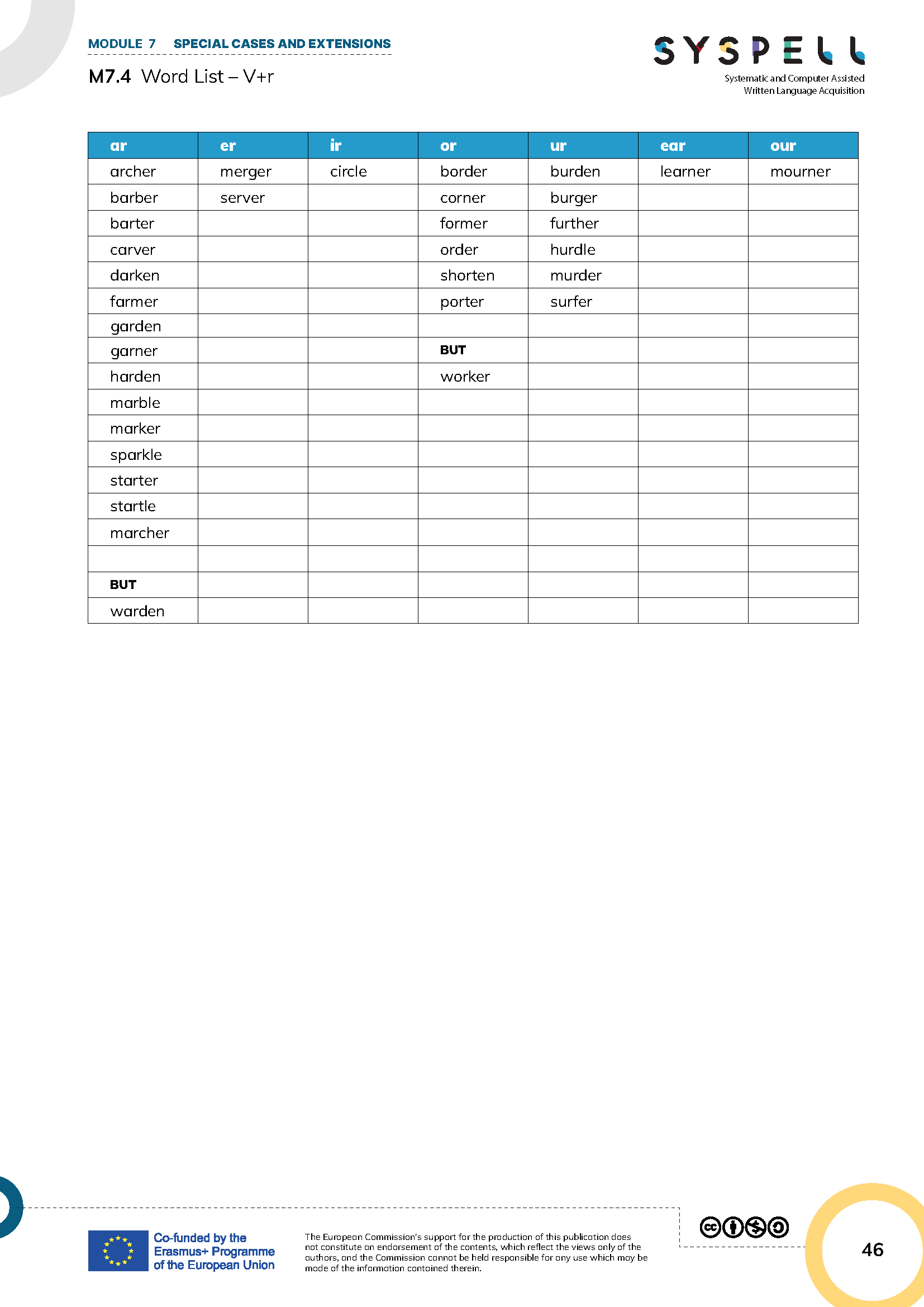Module 2 - Alternative vowels
Introduction
This module is about the so-called "long vowels". Vowels are written with special letters in the alphabet that produce different sounds when pronounced. The long vowels are like the superheroes of vowels because they sound slightly different to normal vowels.
It's also about exploring another interesting concept. The concept of those words that have a special sound formed by two letters together, called a digraph.
Objectives
Through active engagement with this chapter, the children's attention should be drawn to these exceptions.
Through intensive training, the children will be able to use these exception words confidently in their active writing vocabulary.
Materials
Black-/whiteboard, chalk/pencils
Pupils' exercise books, pens
Worksheets
Long Vowel Sounds
Now we are going to learn about something called "long vowel sounds." Vowels are special letters in the alphabet that make different sounds when we say them. The long vowel sounds are like the superheroes of vowels because they sound a bit different than their normal sounds.
Let me introduce you to our first superhero, the letter 'a.' Normally, 'a' makes a sound like "a" in words like cat and hat. But when 'a' becomes a long vowel, it puts on a cape and starts to say its name. So instead of "a," it says "ay." Imagine 'a' wearing a superhero cape and saying "ay" like in the words cake and snake.
Next, we have the letter 'e.' Normally, 'e' sounds like "e" in words like bed and pet. But when 'e' becomes a long vowel, it gets a shiny crown and starts to say its name too. So instead of "e," it says "ee." Picture 'e' wearing a crown and saying "ee" like in the words tree and bee.
Now, let's meet our third superhero, the letter 'i.' Normally, 'i' sounds like "i" in words like sit and pig. But when 'i' becomes a long vowel, it puts on a special hat and starts to say its name as well. So instead of "i," it says "igh." Imagine 'i' wearing a special hat and saying "igh" like in the words night and light.
Our fourth superhero is the letter 'o.' Normally, 'o' sounds like "o" in words like dog and pot. But when 'o' becomes a long vowel, it gets a cool cape and starts to say "oh." So instead of "o," it says "oa." Picture 'o' wearing a cool cape and saying "oa" like in the words boat and coat.
Lastly, we have the letter 'u.' Normally, 'u' sounds like "u" in words like cup and bug. But when 'u' becomes a long vowel, it gets some magical wings and starts to say "oo." So instead of "u," it says "oo." Imagine 'u' with magical wings saying "oo" like in the words moon and zoo.
To help remember these long vowel sounds, you can try a fun activity! Write down words with long vowel sounds, such as cake, tree, night, boat, and moon. Then, draw the superheroes for each long vowel next to their corresponding words. This way, you can visualize and remember them better.
I hope you now have a better understanding of long vowel sounds. Remember, our superheroes 'a,' 'e,' 'i,' 'o,' and 'u' put on special outfits and sound different when they become long vowels. Have fun exploring these sounds in words and finding more examples around you!
Digraphs
There are some peculiarities in English spelling that fit very well into the list of trochaic examples. There are some consonants that create various conditions for the pronunciation of the vowel before. The writing of the words shows an open syllable, but the coding is not clear.
Students are going to learn about words that have a special sound made digraphs. A digraph is when two letters come together to make just one sound.
Digraph “oo”
In words like 'food,' 'moon,' 'zoo,' 'spoon,' and 'soon,' the 'oo' digraph makes the sound like the noise you make when you see something cute or funny—/oo/. You can also think of it as the sound a cow makes—/moo/.
Digraph “ie” or “ee”
Children explore words where the letters 'ie' make the /ee/ sound, just like in the words thief, priest, niece, chief, and field.
Teacher: Imagine that you have a secret code in which each letter represents a sound. In this code, the letters 'ie' come together to make the sound /ee/. So, when you see those two letters together, you know to pronounce that sound.
Digraphs ‘ei’ can make an /ee/ sound
Students are going to learn about some tricky words where the letters 'ei' together make the /ee/ sound. These words may seem a bit puzzling at first, but don't worry! I'm here to help you understand them.
Teacher: Let's start with an example: the word 'ceiling'. You know that a ceiling is the top part of a room. When we say 'ceiling', we actually say the /ee/ sound, just like when we say the word 'see'. You can think of the 'ei' in 'ceiling' as a special team that works together to say the /ee/ sound.
Other examples: ceiling, receive, receipt
Digraph ‘ea’ can make an /ee/ sound
Examples are: each, peach, lead, leaf,real
Ask your friends to find words with ee sound and sort them out in categories. Create rhyms and raps!
Digraph -ar, -er, -ir, -or,
Teacher: Special things happen to the pronunciation of vowel letters when they combine with the letter <r> or the letters <re>, and what happens is different depending on where in the word they occur, and on whether the syllable they’re in is stressed or not.
Teacher: The letter <r> also combines with vowel letters to spell vowels sounds.
Writes on board: ar, er, ir, or, ur and gets children to think of at least a few two-syllable words with these patterns in the stressed first syllable (trochaic words). M7.4 WORD LIST V+R Then asks: What do you notice about how these are pronounced? Are they all different, like the single letters a, e, i, o, u? [This is to elicit the fact that er, ir, ur here are all pronounced /ɜː/.]
Next, draw line across below the trochaic words, and ask for examples of one-syllable words with these patterns to write in the lower section. [This is to elicit the fact that all five patterns have the same pronunciations here as in the trochaic words.]
Next, a new section for words with these patterns plus ure in unstressed final syllables. [This is to elicit the fact that here all six patterns are pronounced /ə/, e.g. in pillar, teacher, elixir, actor, sulphur, nature. There are hardly any with ir: elixir, nadir – any others?]
M7.1 WORD LIST V+V M7.2 WORD LIST V+W
The letters <v> and <w> are hardly ever written double, so there are no two-syllable words that fit into the ‘gabble’ pattern; and this means that a stressed vowel before <v> or <w> is not always pronounced the same way, for example <o> in these words:
mower, slower, lower, grower, bowler, owner BUT: flower, glower, tower, browser, shower
The children write the given words down for special practice words and use them in sentences. They are to be practised as rote-learning words.
Special cases <gh(t)>
M7.3 WORD LIST V+GH(T)
Teacher: Like ‘magic <e>’, centuries ago <gh> was pronounced - if you know people who say the Scottish word loch with a special sound at the end, that’s how <gh> used to be pronounced. Today in a few words it sounds like /f/ - can you think of some examples?
More often today, <gh> combines with vowel letters to spell vowel phonemes. Some occur in only a few words, e.g. <augh> in daughter, fraught, onslaught, slaughter.
A special case is <igh>: if this follows a consonant letter, it is always pronounced /aɪ/ like eye and I and the letter <i>; that’s the good news about <igh>. A few examples are high, sigh, fright, tight, light, bright – can you think of some more? There’s also bad news about <igh> - any ideas what it is? OK, I’ll tell you – there are only about 25 words in the entire English language to which this pronouncing rule applies – and it doesn’t help you with spelling, so these words too just need to be learnt off by heart.


.png?inst-v=ece954b3-97d0-42d7-8c07-1f1e0137b878)
